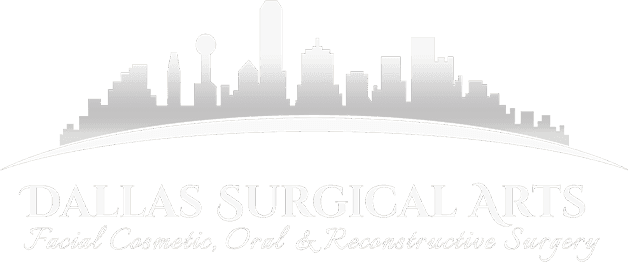The temporomandibular joint, commonly known as TMJ, plays a crucial role in our daily lives, allowing for the smooth and painless movement of the jaw. However, for some individuals, TMJ disorders can lead to chronic pain, discomfort, limited jaw function, and a range of other issues. In recent years, advancements in oral and maxillofacial surgery have provided a solution – total joint replacement.
Understanding TMJ Disorders
To comprehend the significance of TMJ joint replacement, it's essential to first grasp the nature of TMJ disorders (TMD). The temporomandibular joint connects the jawbone to the skull, facilitating essential movements such as chewing, talking, and yawning. When this is disrupted, you may experience a variety of symptoms, including pain, clicking sounds, popping sounds, headaches, and difficulty with basic functions like opening and closing your mouth. Temporomandibular joint (TMJ) disorders can be a source of persistent pain and discomfort for many individuals, impacting their daily lives and overall well-being.
Traditional approaches to TMJ disorders often focused on managing symptoms rather than addressing the root cause. However, as oral and maxillofacial surgery has advanced, so too has the understanding and treatment of TMD. TMJ joint replacement represents a significant leap forward in providing comprehensive and lasting relief for patients.
Benefits of TMJ Joint Replacement
Pain Relief
TMJ joint replacement offers pain relief for those suffering from chronic jaw pain associated with TMJ disorders. The relief from chronic pain and the restoration of normal jaw function can positively impact daily activities, from eating and speaking to engaging in social interactions.
Improved Functionality
The prosthetic joint used in TMJ replacement is crafted to closely mimic the natural movement of the jaw. This results in improved functionality, allowing patients to enjoy a broader range of jaw movements without the constraints and discomfort caused by TMJ disorders.
Long-Term Solution
Unlike some temporary treatments that may require frequent follow up or adjustments, TMJ joint replacement offers lasting relief from the debilitating effects of TMJ disorders.
Frequently Asked Questions
What is TMJ Joint Replacement, and How Does it Work?
TMJ joint replacement is a meticulous surgical procedure designed to replace the damaged temporomandibular joint with a prosthetic joint. The surgery typically involves the precise removal of the diseased joint components, followed by the placement of the prosthetic joint. This joint is engineered to replicate the natural movements of the jaw, restoring functionality and alleviating pain.
Who is a Candidate for TMJ Joint Replacement?
Candidates for TMJ joint replacement are individuals who have exhausted conservative treatment options and continue to experience significant pain and dysfunction associated with TMJ disorders. Candidates undergo a thorough evaluation by Dr. Sanovich, board-certified oral and maxillofacial surgeon in Dallas, to determine if they meet the criteria for the procedure.
What Causes TMJ Disorders?
Common causes of TMJ disorders (TMD) include jaw injuries, arthritis, teeth grinding (bruxism), and even stress. For some, these conditions may progress to a point where conservative treatments, such as Botox or arthroscopy, prove insufficient.
What Are the Symptoms of TMJ Disorders?
Symptoms of TMJ disorders include jaw pain, clicking or popping sounds during jaw movement, headaches, difficulty chewing, and limited jaw mobility. These symptoms can significantly impact an individual's quality of life.
What Is the Recovery Process Like After TMJ Joint Replacement?
The recovery process following TMJ joint replacement varies from patient to patient but generally involves a period of rest and gradual reintroduction of normal activities. Patients are provided with post-operative guidelines, including dietary restrictions and recommendations for jaw exercises. Follow-up appointments with Dr. Sanovich are essential to monitor progress and address any concerns.
Are There Risks and Complications Associated with TMJ Joint Replacement?
It is important to discuss the details of this procedure with Dr. Sanovich before undergoing surgery.
How Long Does the Effect of TMJ Joint Replacement Last?
TMJ joint replacement is designed to provide long-term relief. With proper care, adherence to post-operative guidelines, and routine follow-up appointments, patients can experience lasting results.
Can TMJ Joint Replacement Improve Facial Appearance?
While the primary goal of TMJ joint replacement is to restore function and alleviate pain, some patients may notice cosmetic improvements as a result of this procedure. The procedure can provide aesthetic benefits as it will often harmonize facial features by addressing asymmetry or changes in facial structure caused by severe TMJ disorders.
Schedule with Dr. Randy Sanovich in Dallas
TMJ joint replacement represents a significant advancement in the field of oral and maxillofacial surgery, offering a permanent solution for individuals suffering with the debilitating effects of TMJ disorders. By understanding the details of this innovative solution, patients can make informed decisions about TMJ surgery as they seek to reclaim a pain-free, functional life. Schedule your consultation with Dr. Randy Sanovich today!
Wondering if you are a candidate for TMJ replacement? Schedule a consultation with board-certified oral and maxillofacial surgeon Dr. Randy Sanovich and call 972-776-4888!


